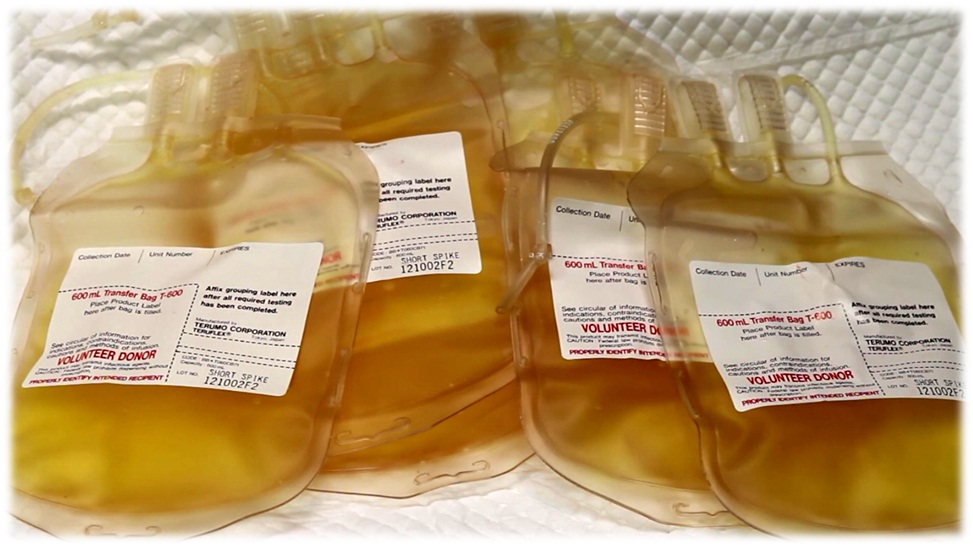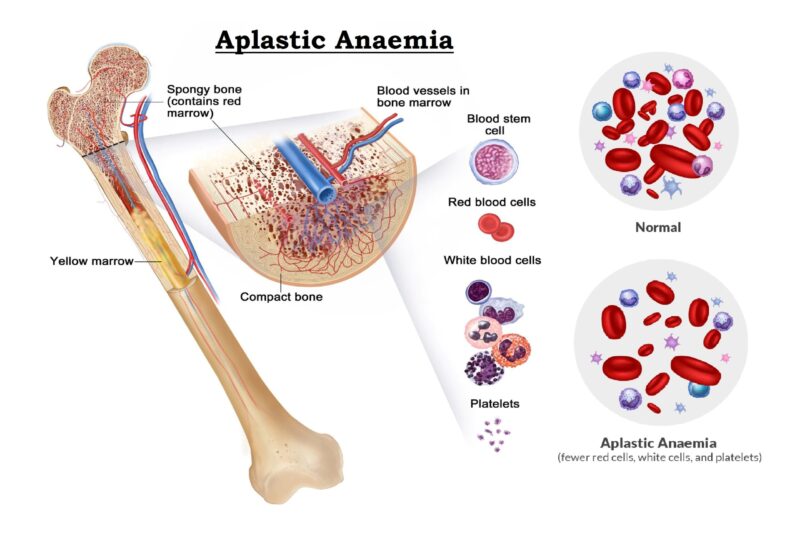Preparation of Fresh Frozen Plasma (FFP)
Fresh-Frozen Plasma (FFP) is the component that is prepared by freezing various plasma factors from whole blood or from the plasma collected through aphaeresis at the temperature and duration at which they can keep their functions. Fresh-Frozen Plasma (FFP) contains stable coagulation factors, immunoglobulins and albumin at the same level as that of typical plasma. This being the case, FFP can be considered a costly therapeutic component, the source of which is the human body.
Conditions that cause the deficiency of multiple coagulation factors and may require the administration of Fresh-Frozen Plasma include liver disease and disseminated intravascular coagulation. Fresh-Frozen Plasma is also indicated for a planned surgery or invasive procedure in the presence of abnormal coagulation tests, for the reversal of warfarin in the presence of active bleeding or planned procedure when vitamin K is inadequate to reverse the warfarin effect, thrombotic thrombocytopenic purpura, and congenital or acquired factor deficiency with no alternative therapy. Other more specific recommendations for Fresh-Frozen Plasma based on systematic review include trauma patients requiring massive transfusion and warfarin-related intracranial hemorrhage.
Preparation of Fresh Frozen Plasma (FFP)
Using double bags:
- Process all units within 6 hours of blood collection.
- Keep units vertical on laminar flow table for 30 – 45 minutes.
- Keep bags in buckets and balance them. Keep equally balanced buckets with bags diagonally opposite in refrigerator centrifuge ensuring that the poison of bags in buckets is parallel to direction of spin.
- Centrifuge at 4ºC at 3880 r.p.m. for 5 minutes.
- After centrifugation gently remove the bags form buckets and placed them on Expresser stand under laminar flow. Break the integral seal connecting satellite bags. Manually express supernatant plasma in the satellite bag.
- In case of double bags leave 50 – 60 ml of plasma bark along with red cells in primary bag. This component is Packed Red Cells and. stored it at 4°C (2°C - 8°C) temperature in the refrigerator and kept in component room.
- Label plasma in satellite bag as Fresh Frozen Plasma (if processing is completed within 6 hours of collection) and stored immediately in the refrigerator at below –30ºC.
- If plasma is collected after 6 hours of collection, label it as Factor-VIII deficient plasma.
- After the testing, Labeling and entering the inventory bags are transferred to deep freeze in issue area.
Using Triple bags with or without additive solution:
- Process the blood collected within 6 hours of time of collection.
- Keep units vertical on laminar flow table for 30 – 45 minutes.
- Note the weight of primary bag and record in register.
- Keep bags in buckets and balance them.
- Keep equally balanced bag diagonally opposite in refrigerated centrifuge ensuring that the position of bags in bucket is paralleled to direction of spin.
- Centrifuge at 3500 r.p.m. for 10 minutes at 4ºC.
- Keep bag on plasma separation on laminar flow. Break the seal of tubing connecting satellite bag. Express plasma in satellite bag leaving 50 – 60 ml of plasma in primary bag. If additive is used, remove all plasma in satellite bag before clamping.
- Remove the clamp of bag containing additive solution and let additive solution pass slowly in primary bag containing Red cells.
- Mixed contain thoroughly, Seal the tubing and Detach the bag.
- Keep primary bag containing Packed cells with additive solution in quarantine storage in blood bank at 4ºC (2ºC - 8ºC) in the refrigerator and kept in component room.
- Label the bags and take it on inventory after testing is over.
- Spin the satellite bag containing Plasma Rich in Platelet (PRP) and connecting bag from which additive solution was emptied at 22ºC at 500 r.p.m. for 10 minutes in refrigerated centrifuge after balancing buckets.
- Place bag containing PRP on expresser stand under laminar flow.
- Express plasma in empty bag, leaving 50 – 60 ml of plasma along with platelet.
- Seal the tubing and cut the tubing of plasma bag short (1’) to avoid breakage during frozen storage.
- Keep plasma bag in deep freezer kept in component room at –30ºC.
- After the testing, Labeling and entering the inventory bags are transferred to deep freeze in issue area.




